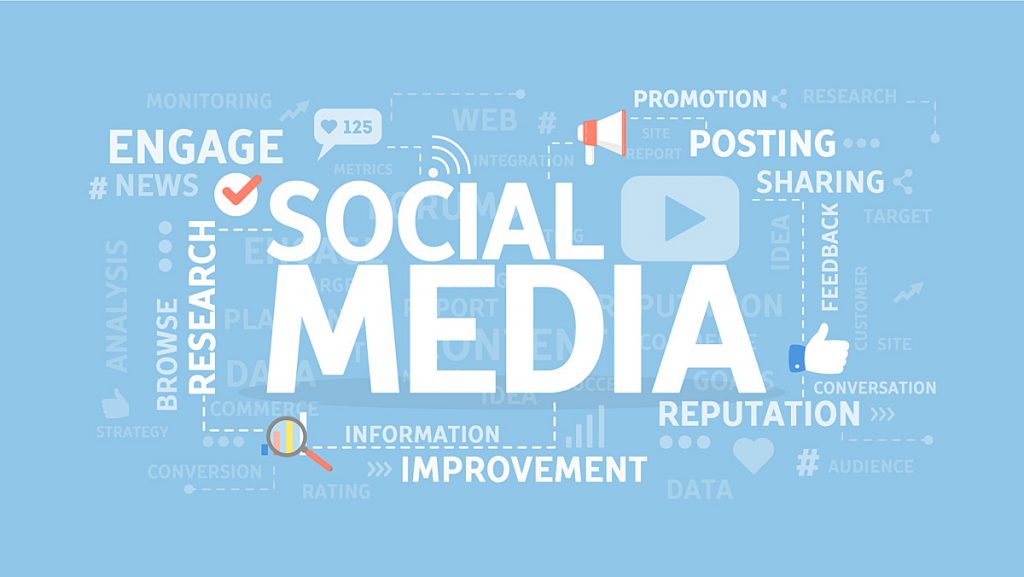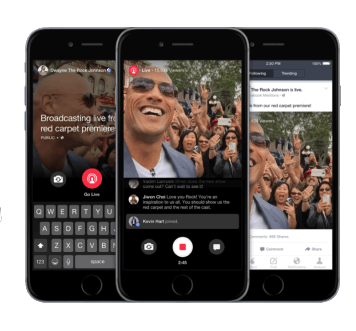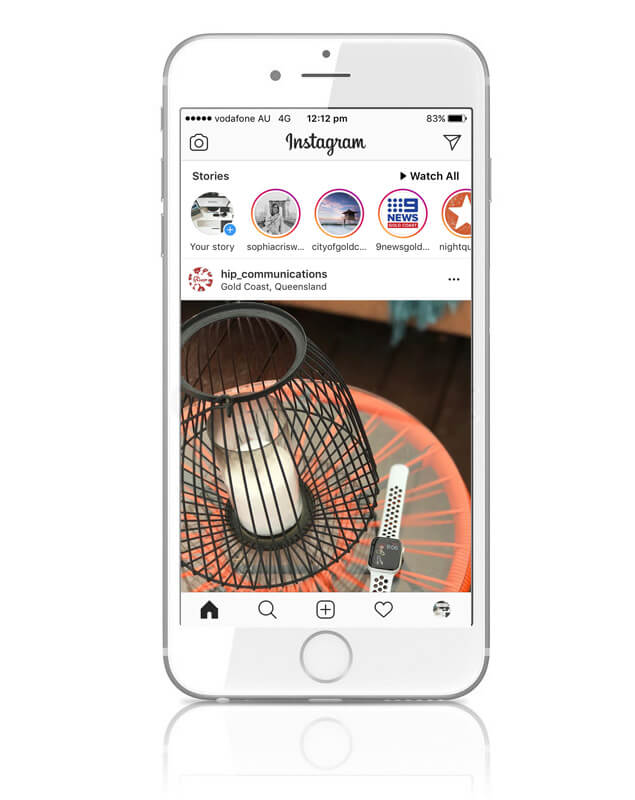
Social media is constantly changing, so leading industry experts are always keeping an eye on the latest developments in the field. Novelties are extremely diverse and include new social media platforms, innovative features, updates, shifts in consumer behaviours, new ways to provide customer service, and many others.
The social media marketing trends of 2019 offer marketers and businesses the chance to fascinate audiences with a range of new tools and obtain a higher return on investment for their social media campaigns.
Keep on reading to find out what the latest social media marketing trends of 2019 are so you can stay ahead of the game and use online platforms to their full potential.
The rise of User Generated Content (UGC)
The buying process is no longer as simple as going to the brick-and-mortar store and picking up a product. People compare prices, search for deals, check with friends, and want to make their opinions and experiences known to other users online.
Many businesses have started embracing user-generated content (UGC) to promote their brands and products. Incorporating UGC about how your product is being used in real life will add a personal touch to your promotions. But what does it actually imply?
To answer the question, let’s give one of the best examples of UGC campaigns – Coca Cola created personalised coke bottles for the “Share a Coke” campaign and people from all over the world went crazy for bottles imprinted with their names. The UGC part comes when customers were encouraged to share pictures of themselves with their personalised coke bottle on social networks – customers became the actual advertisers.
There have already been implemented thousands of UGC campaigns all over the world by multiple brands, and anyone can do it; even a small business owner like most of you reading this article can try it no matter what product or service you are offering.
Live Videos

A tool that has become extremely popular in the last year or so and remains among the social media marketing trends of 2019 is live video.
The upsurge of live videos corroborates the fact that humans love visual experiences, especially if they feel like ‘a part of the moment’. An increasing number of businesses are using live video marketing to drive sales and it’s the hot stuff that produces results.
Taking video to live enables interaction with the audience and activates the “Fear Of Missing Out” (FOMO). As a result, live videos deliver better performance than blog posts and attract increased traffic, more views, and more engagement.
Social Media Marketing Gold Coast
We predict that marketers will leverage the growing popularity of live videos and live streams because:
- Live videos are more engaging and interactive – you can respond to audience reactions in real time.
- It is one of the most authentic ways to connect with your audience, and it helps build trust in your brand – even if your live videos are not professional, they can attract more engagement than a perfect video that audiences do not resonate with.
- You can reach a broad audience base with a single click – social networks provide all kinds of tools to make live streaming a breeze.
- Live video responds to the audience’s need to be involved and co-create – which is part of the user-generated content trend we have described earlier.
Messaging Apps and Chatbots
Brands that want to stay ahead of their competitors should be able to communicate with audiences using the media most people prefer nowadays. This means you should be on the most popular messaging apps, like WhatsApp or Messenger and make it easy for prospects and clients to contact you. The number of customer service interactions will increase, but there is also a solution for the upcoming requests flood – chatbots. There are several reasons why you should use this combination of tools for your customer service:
- Chatbots offer more personalized interactions – they don’t have to keep in mind client information or check it in a database – personalised responses are created automatically;
- Messaging apps have an easy-to-use interface, are quicker to use, and convenient (not many people are a fan of picking up the phone and calling);
- Messengers and chatbots provide platforms that make instant customer service possible, thereby improving the customer experience;
- Chatbots can be programmed to service and answer basic customer queries.
Any business looking to align to social media marketing trends of 2019 should take their customer service interactions to a new level by using the latest communication tools, i.e. messaging apps and chatbots, which mark the beginning of the AI-driven customer service era.
Social Media Stories

According to Entrepreneur, 200 million Instagram users employ Instagram Stories each month. What initially seemed like a redundant feature (you already had other tools to share visual content on Instagram) is now the thing of the moment when it comes to sharing content on social networks. And it’s not only average users who share social media stories; many brands have included this feature among their social media marketing tools.
The ‘stories’ format is likely to become the primary social sharing feature, overtaking the News Feed layout. This is why social media marketers have to continue to pay special attention to the rise of the story feature and ‘in-the-moment’ consumption as a primary way of information dissemination, one that is favoured by a large group of social media users and is enriched with short yet powerful visual communication.
Social data – Trust and transparency
Brands of all sizes are investing in social media at large and social networks are far from the novelty they used to represent a decade ago. If several years ago social media marketing was more like an experiment, nowadays marketers have already refined the mechanisms of captivating audiences on Twitter, Facebook, Instagram and other platforms and don’t make a single move unless they know exactly what they are doing.
Marketers have always needed to find more authentic and dialogical ways of communicating with their customers, instead of practicing one-sided marketing communications revolving around collecting masses of user data without offering any valuable proposition to the consumers. And the data provided by social networks enables them to do exactly this: to find out what consumers need and like, and what they are afraid of, so brands can communicate the message that will sell.
On the other hand, defining ROI for social media is a major concern for a large number of businesses, and those responsible for it are afraid they will have to dig down an endless rabbit hole. The good news is that social media data and metrics are available, so anyone can take a data-driven approach to obtain the best results with fewer resources.
The beginnings of social TV and vertical videos
Just when you were thinking the world of social media today is too shallow and only capitalises on people’s short attention spans, take a look at another development – social TV. Instagram has launched in the summer of 2018 IGTV, which is a TV feature enabling the broadcasting of long-form video content in a format different from what we usually have on social media platforms.
This means that more brands will become broadcasters and audiences will benefit from more content variety and novelty. Instagram IGTV video can be up to an hour long, which makes this new tool more similar to traditional television. The new feature is sure to contribute to Instagram’s rise in 2019; this social network is the second most popular social media platform after Facebook and its popularity is due to Instagram’s strong focus on visuals.
Micro-influencers
Social media influencers have become a huge trend in the last couple of years – they are people who have millions of followers on social networks and who are even more visible than celebrities appearing on traditional television for instance. Brands discovered that they could promote their products and services very effectively through these opinion makers and started focusing their efforts on collaborating with influencers.
However, the number of influencers has grown very fast and the services of top-rated names have become increasingly expensive. Under these circumstances, brands have started to look for alternatives such as micro-influencers – people who have maybe just thousands of followers, but who are willing to promote their products for a fraction of the costs associated with “A-rate” influencers.
Having to shift towards the services of micro-influencers didn’t prove to be so bad for brands, and they will continue to resort to this solution even more in 2019 for the following reasons:
- Micro-influencers are already more credible than big names who are often suspected by audiences they create content just for advertising purposes
- They have fewer followers, but these audiences are genuinely interested in what the micro-influencers have to say
- They are often representative for a market niche and are experts in their field, which once again makes them more credible
- They are more down-to-earth than major influencers because they are not massively targeted by advertisers
- They represent the perfect solution for small businesses due to increased accessibility and focus on a certain niche or geographical area.
Which of these social media marketing trends of 2019 are you more likely to adhere to and why?
Sharing is caring!




